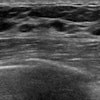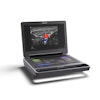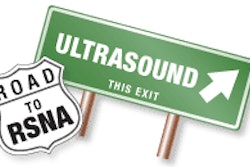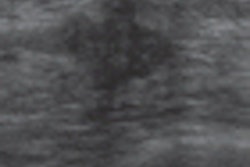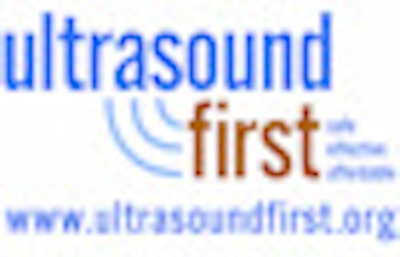
Ultrasound is an underutilized diagnostic imaging exam, according to the American Institute of Ultrasound in Medicine (AIUM), which organized a forum to promote the concept of performing "ultrasound first" when clinically indicated. But what will it take to make this happen?
In attendance at the New York City symposium on November 12 were several hundred attendees, representing a range of healthcare professionals and every medical specialty using ultrasound. The mix included medical educators, industry representatives, and individuals from academic societies, radiology business management companies, and even payors. They had lots of ideas, expressed concerns, and described challenges.
Spirited discussion
It's all about physician education, patient and payor awareness, quality, accreditation, solid evidence-based data, and money. This was the consensus of a panel discussion that was accompanied by spirited audience participation.
It's vital to emphasize ultrasound knowledge and competency in performing an exam. It's not enough to have training consist of a month's rotation to a discipline that uses ultrasound regularly, such as obstetrics.
"Ultrasound needs to be integrated in all four years of medical school education," said panelist Dr. Richard Hoppmann, dean of the University of South Carolina (USC). He explained that such a program was implemented at his institution seven years ago because "it was becoming very clear that ultrasound had the potential to significantly enhance medical education and medical practice."
Ultrasound proved to be a wonderful teaching tool, especially with courses such as anatomy and physiology, Hoppmann said. It is used to enhance the physical exam skills of the students. The medical school emphasizes that the technology must not interfere with direct communication between the patient and provider during an exam and consultation.
Ultrasound can, however, be a very effective instructional and motivational tool for patients. The medical school offers a free clinic, and two-thirds of the patients who use the service have hypertension. USC students are taught how to review an image with a patient, and how to explain the patient's clinical condition. This practice has proved to be a great motivator for patients to take their medications as prescribed, keep future appointments, and follow up with recommendations that can help improve their health.
The program has been an overwhelming success. Students are surveyed each year, and more than 90% consistently report that it is very beneficial to them. Alumni who do not use ultrasound in their current specialty still say that having this core competency has helped them professionally.
Several attendees raised concerns about funding for such education, both for equipment and for educators. Hoppmann said that USC applied for grants and donations from a variety of private individuals, foundations, and government sources. Ultrasound equipment is provided by an unrestricted educational grant from GE Healthcare.
"It's necessary to have a strong commitment from the heads of the medical schools, and a strong relationship with a hospital as well," he observed. "Medical schools want the best residents, so it's to our advantage to offer an enriched ultrasound program. Foundations get the value of promoting the appropriate clinical use of a low-cost, nonionizing diagnostic exam. Donors get it. There are many opportunities to seek funding."
Promoting ultrasound as a "wonderful niche" for faculty, Hoppmann said that his institution factors in time to train students as part of a schedule. It has also established ultrasound fellowships, with the hope that these fellows will offer the same opportunity in their future careers.
Training, training, and more training
Other speakers at the symposium emphasized the need to hire exceptional sonographers to help with training. The quality of an exam is of paramount importance, they said.
Because exam quality is determined by the person who performs it, training, training, and more training couldn't be emphasized enough. Several participants noted that ultrasound exam quality wasn't mandated enough. The need for accreditation was also raised.
"Accreditation shows that you make the effort to show quality in your practice or your department," said Dr. Alfred Abuhamad, the conference moderator and president of AIUM. "This helps to raise quality levels and ensure that any ultrasound exams represent a really good product."
Attendees suggested that the Joint Commission might be influential in forcing the adoption of quality standards. Others commented that hiring average sonographers contributed to the problem.
One attendee, a gynecologist practicing in a large city with two academic medical schools, lamented the fact that "our radiologists can't read a pelvic ultrasound to save their lives. You can't just push a procedure to be performed. You need to push the procedure hand in hand with quality."
A pediatric radiologist who spoke at the symposium reinforced the need for liberal training of sonographers, as well as accreditation.
"Ultrasound is unique because it is difficult," she said. "You need the best machines and the best sonographers. You need time, which equates to money. You need to implement good practices. This takes money. How do we get accreditation for everyone who needs it?"
A major topic of discussion was whether reimbursement policies should be revised to reinforce the value of performing ultrasound first in specific clinical diagnoses, when this lower-cost exam might produce the needed results. An emergency physician pointed out that the specialty implemented guidelines for 11 core applications in emergency care, yet point-of-care ultrasound may not be reimbursed in the emergency setting.
Another emergency physician noted that the methods of reimbursement for an emergency department visit are mindboggling. Not only do reimbursement rules differ in communities, states, by payor, and by hospital, but one state pays the same reimbursement rate for any Medicare/Medicaid patient visit, no matter what type or how much care is given to the patient.
Representatives from radiology benefits management (RBM) companies chimed in. Dr. Thomas Dehn, executive vice president and chief medical officer of National Imaging Associates, and Dr. Norman Scarborough, a radiologist and vice president at MedSolutions, both said that providers needed to raise reimbursement issues with RBMs if they want changes in clinical guidelines. They asked for data, and that gatekeepers and the health insurance companies they represent be invited to participate in the development of guidelines.
"You need to reach the people who make decisions and convince them that policies need to change and reimbursement may be needed," Dehn said.
One attendee expressed skepticism. He said that historically when payors identify an uptick in utilization that differs from previous patterns, payment may be terminated without determining if there is a sound reason for the change. He cited increased use of ultrasound by podiatrists in clinics as an example.
Another attendee suggested that it is the responsibility of professional organizations such as AIUM to alert medical directors at payors of utilization changes, so that a seemingly sudden increase for reimbursement of a particular code will not be a surprise.
The challenges of implementing a broad message such as "ultrasound first" were discussed, as well as the difficulty of getting physicians to make changes that were clearly representative of a standard of care.
There is also the need to empower patients with information and teach them the questions they should be asking. Panelist Martha Nolan, vice president of public policy at the Society for Women's Health Research, explained the value of including advocacy and research organizations in an "ultrasound first" initiative.
"I don't think patients have a clue as to what they should be asking a physician when he or she recommends or orders an imaging exam," she said. "Patients need to be empowered with the questions they should ask. The lower cost and convenience of ultrasound will have a huge impact on patients as consumers. Educate us, and we will educate our constituencies."
Dr. John Santa of Consumer Reports concurred. He pointed out that things get implemented quickly in medicine if they make money.
"We are interested in doing something about that," he said. "Medical professions -- all of you here -- need to help consumers a lot more than [you] are doing now."
Change boils down to education: for patients, medical schools, physicians, payors, professional organizations, foundations, and legislators.
